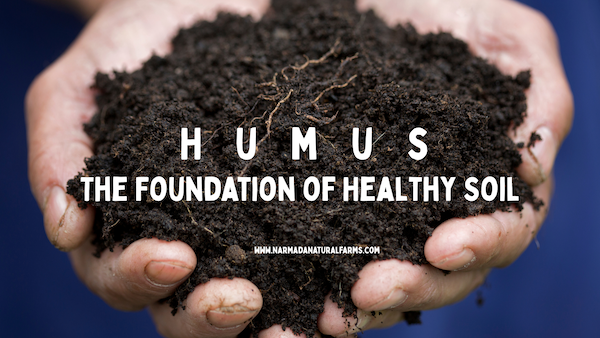Humus is often referred to as the lifeblood of fertile soil. It is the dark, rich, and crumbly material that forms in the soil when plant and animal matter has decomposed fully. Unlike raw organic matter, which is still in the process of breaking down, it is stable and will not break down any further. This stability allows it to provide long-lasting benefits to the soil, making it a critical component of natural farming.
What is Humus?
Humus is much more than decayed matter; it is a complex substance that holds a wealth of nutrients, retains moisture, and improves the structure of the soil. It acts like a sponge, holding up to 90% of its weight in water, which is vital for plants, especially during dry periods. Furthermore, it is rich in nutrients such as nitrogen, phosphorus, and sulfur, which are essential for plant growth. By creating a buffer that holds onto nutrients and releases them slowly, humus ensures that plants have a steady supply of what they need to thrive.
Also Read: Earthworms in Natural Farming
How Is It Formed?
The formation of humus is a natural and intricate process that begins with the decomposition of organic material, such as leaves, crop residues, dead plants, and animal remains. This process is driven by a diverse community of soil organisms, including bacteria, fungi, earthworms, and insects. These organisms break down the complex organic compounds into simpler substances, which are further decomposed into humus.
Decomposition occurs in stages. Initially, larger organisms like earthworms and beetles break down the organic material into smaller pieces. Then, microorganisms such as bacteria and fungi take over, decomposing these smaller pieces into simpler compounds. As the decomposition progresses, these compounds become increasingly stable, eventually forming humus.
Also Read: The What, Why, and How of Soil Health at Your Farm
Humus formation is nature’s way of recycling nutrients and returning them to the soil. It is a slow but continuous process, and the amount of humus in the soil is a balance between the rate of decomposition and the rate at which new organic material is added.
How Long Does It Take to Create Humus?
Creating humus is not a quick process. Depending on environmental factors such as temperature, moisture, and soil type, it can take anywhere from a few years to several decades for humus to form. In warm, humid climates, decomposition happens more quickly, so humus is formed faster. In cooler, drier climates, the process is slower, and it may take much longer for significant amounts of humus to accumulate.
For farmers, this means that building humus in the soil is a long-term investment. It requires patience and consistent effort. However, the benefits of having humus-rich soil are immense and long-lasting. Once it is established in the soil, it can remain there for decades, continuing to support plant growth and improve soil health year after year.
Also Read: How To Increase Organic Carbon At Your Farm?
Steps Farmers Can Take to Create Humus in Their Soil
- Regularly Add Organic Matter: The most crucial step in creating humus is to consistently add organic matter to the soil. This can include crop residues, compost, green manure, and mulches. The more diverse the organic material, the richer and more beneficial it will be.
- Minimize Soil Disturbance: Practices like no-till farming or reduced tillage are beneficial for humus formation because they minimize soil disturbance. This allows the soil organisms that break down organic matter to thrive and continue their work. Excessive tilling can disrupt these organisms and slow down the process of its formation.
- Encourage Soil Life: Healthy soil life is essential for the formation of humus. Farmers can encourage this by maintaining soil cover with plants or mulch, avoiding harmful chemical inputs, and ensuring that the soil remains moist. Earthworms, beneficial insects, and microorganisms all play a vital role in breaking down organic matter and turning it into humus.
- Use Natural Fertilizers: Natural fertilizers like compost and well-rotted manure not only provide nutrients to plants but also add organic matter to the soil. Over time, this organic matter is decomposed into it. By relying on natural fertilizers, farmers can enhance its content in their soil while also feeding their crops.
- Practice Crop Rotation and Cover Cropping: Growing a variety of crops in rotation and using cover crops can help improve soil health and add diverse organic matter to the soil. Different plants contribute different types of organic material, which can enrich the humus formed in the soil. Cover crops also help prevent soil erosion and improve soil structure, further contributing to its formation.
Also Read: Understanding Natural Farming
Conclusion
Humus is the cornerstone of fertile and healthy soil. Farmers practising natural farming invest time and effort to build it up. In return, they gain invaluable benefits. These include improved soil structure, better water retention, and increased nutrient availability. Farmers consistently add organic matter and minimize soil disturbance. They also promote soil life and use natural fertilizers. These practices help foster humus formation in the soil. This not only enhances the productivity of their farms but also contributes to long-term soil health and sustainability. Investing in humus is an investment in the future of farming, ensuring that the soil remains fertile and productive for generations to come.
***
Please send a WhatsApp message to 9303539939 or an email to narmadanaturalfarms@gmail.com for more details on consultancy, webinars, or to purchase produce/seeds. Follow on Instagram and X.
